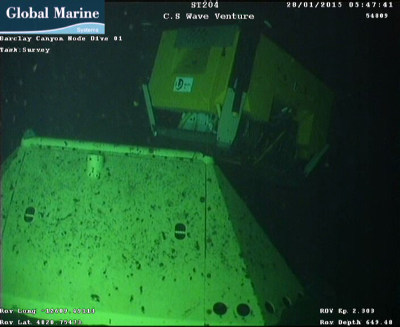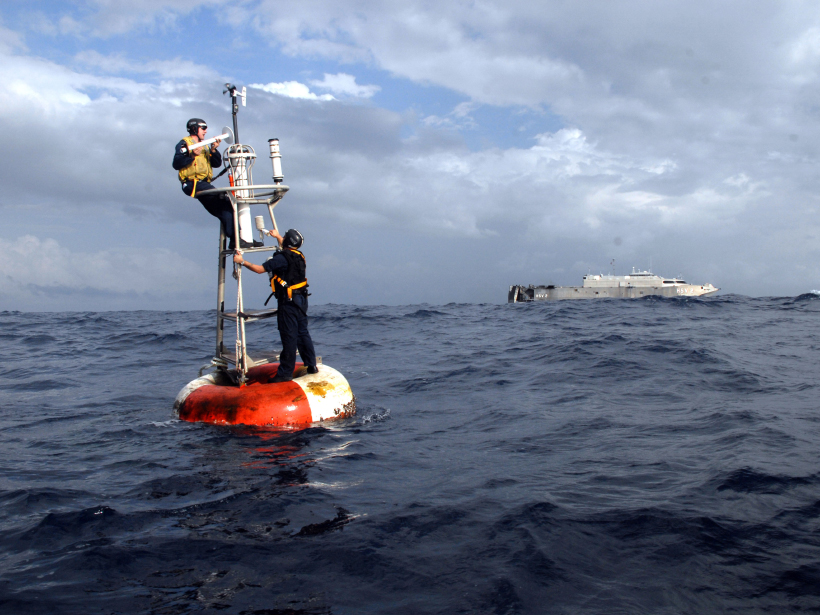Science observation of the ocean is difficult. The cost to repair or replace a failed device can run many orders of magnitude higher than the base component cost.
Instruments, cables, and connectors supplied by commercial oceanographic equipment vendors fail at unacceptably high rates. Most ocean observatories have developed testing and burn-in procedures to weed out problem instruments early, but tested instruments still commonly fail after deployment.
In September 2016, representatives from ocean observatories around the world attended a workshop at the Monterey Bay Aquarium Research Institute to share their experiences and exchange ideas for improvement. Attendees were asked to describe specific examples of trouble and approaches for mitigation. Several oceanographic equipment vendors were also invited, and a few were brave enough to attend. Bravery was needed because products from many vendors have been identified as sources of trouble by more than one observatory.

Credit: UW/NSF-OOI/WHOI; V16
One attendee described accumulated corrosion on connectors after a yearlong deployment (Figure 1), which may indicate that performance has been compromised. Another common failure discussed at the meeting was seawater intrusion into “atmospheric” housings. These housings enclose their contents in dry gas environments at or near normal surface-level pressures. Seawater leaking into an electronics housing creates a dangerous situation beyond the simple destruction of the electronics. Electrolysis can produce hydrogen and oxygen at seafloor pressures, and a compromised housing can spontaneously explode when brought to the surface or weeks later during postrecovery inspection.
Human interference, both purposeful and accidental, is an ongoing problem, attendees noted. Observatories using surface buoys regularly find their equipment vandalized, stolen, or damaged by human activity. Subsea equipment is subject to damage by fishing operations. In Figure 2, a node in the Northeast Pacific Time-Series Undersea Networked Experiments cabled system (NEPTUNE) is askew, likely due to a trawl net catching the lower edge of what was billed to be a trawl-resistant frame. This incident revealed two failures. The first was nontechnical: The trawler was in a marked no-operations area. The other was a design fault where no latches were installed to keep the node in the frame.

After attendee presentations, working groups were formed to tackle issues in three categories: cables and connectors, systems, and testing and operations. The groups brainstormed ways to gain improvements in these arenas. The participants agreed that it was useful to share experiences, and they look forward to continued collaboration to advance the state of the art in ocean observing.

Their recommendations, and general discussions of the larger group, will be detailed in the full workshop report, which will be posted on the workshop website when completed. More information about the workshop agenda and presentations can be found on the workshop’s website.
The workshop was supported by the National Science Foundation Ocean Technology and Interdisciplinary Coordination program with a grant to the University of Hawai‘i. The Monterey Bay Aquarium Research Institute graciously made their facilities available.
—Bruce M. Howe (email: [email protected]), University of Hawai‘i at Mānoa, Honolulu, Hawaii; and Eric McRae, Applied Physics Laboratory, University of Washington, Seattle
Citation:
Howe, B. M.,McRae, E. (2017), Deep trouble! Common problems for ocean observatories, Eos, 98, https://doi.org/10.1029/2017EO073657. Published on 22 May 2017.
Text © 2017. The authors. CC BY 3.0
Except where otherwise noted, images are subject to copyright. Any reuse without express permission from the copyright owner is prohibited.

